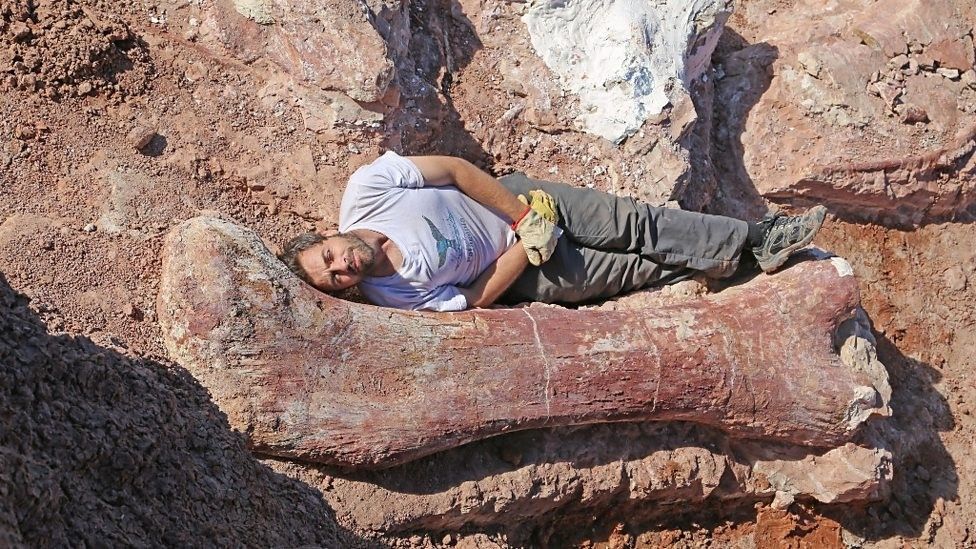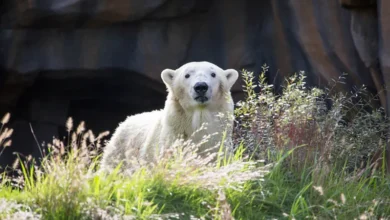Gigantic dinosaur skeleton on show in London
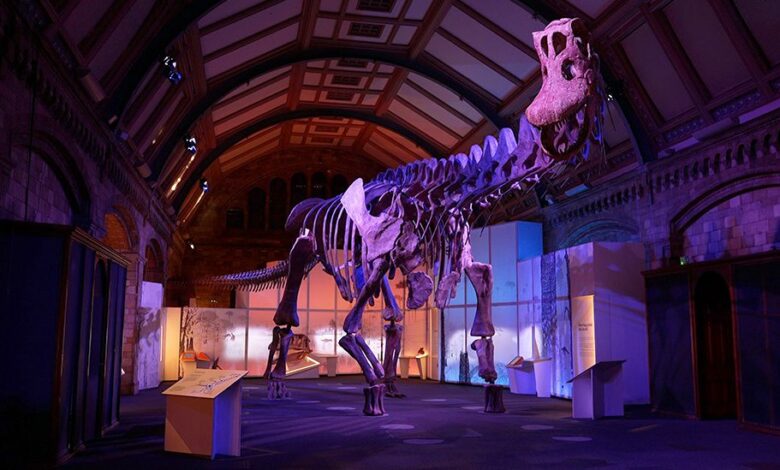
A colossus has landed in London: A cast of what was one of the biggest animals ever to walk the Earth is now on show at the Natural History Museum.
Patagotitan was a dinosaur that lived 100 million years ago in South America.
Measuring some 37m (121ft) from nose to tail, the beast could have weighed up to 60 or 70 tonnes in life.
The museum has brought over not just a representative skeleton but some of the real fossil bones first discovered in Argentina in 2014.
The largest is a 2.4m-long femur, or thigh bone. It’s been erected upright to give visitors an extraordinary selfie opportunity.
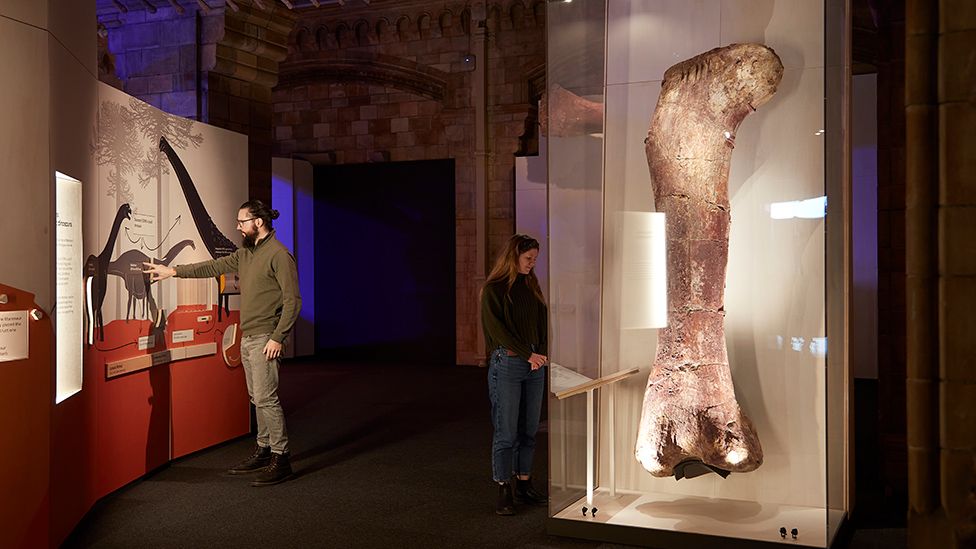
“Patagotitan was what we call a sauropod dinosaur,” explained palaeontologist Prof Paul Barrett.
“It’s a relative of things like Diplodocus that you might be a bit more familiar with. It’s one of these large barrel-bodied animals with forced-out legs. It almost looks like a giant elephant that’s had an anaconda snake threaded through it, with a very long neck and a long tail,” he said.
The replica skeleton is on loan from Argentina’s Museo Paleontológico Egidio Feruglio (MEF), whose staff unearthed the original fossils.
The London institution had to put its thinking cap on to work out how best to display the creature.
It only just fits in its Waterhouse Gallery, its largest exhibition space. Even then, the end of the tail has had to be bent around a column.
The floor also needed to be strengthened, but, cleverly, engineers have been able to hide some of the supporting armature, or support frame, so that it looks as though the dinosaur is walking along the carpet.
“It’s been quite the challenge, second only to hanging our blue whale from the ceiling in the museum’s Hintze Hall,” said head of technical production, Jez Burn.
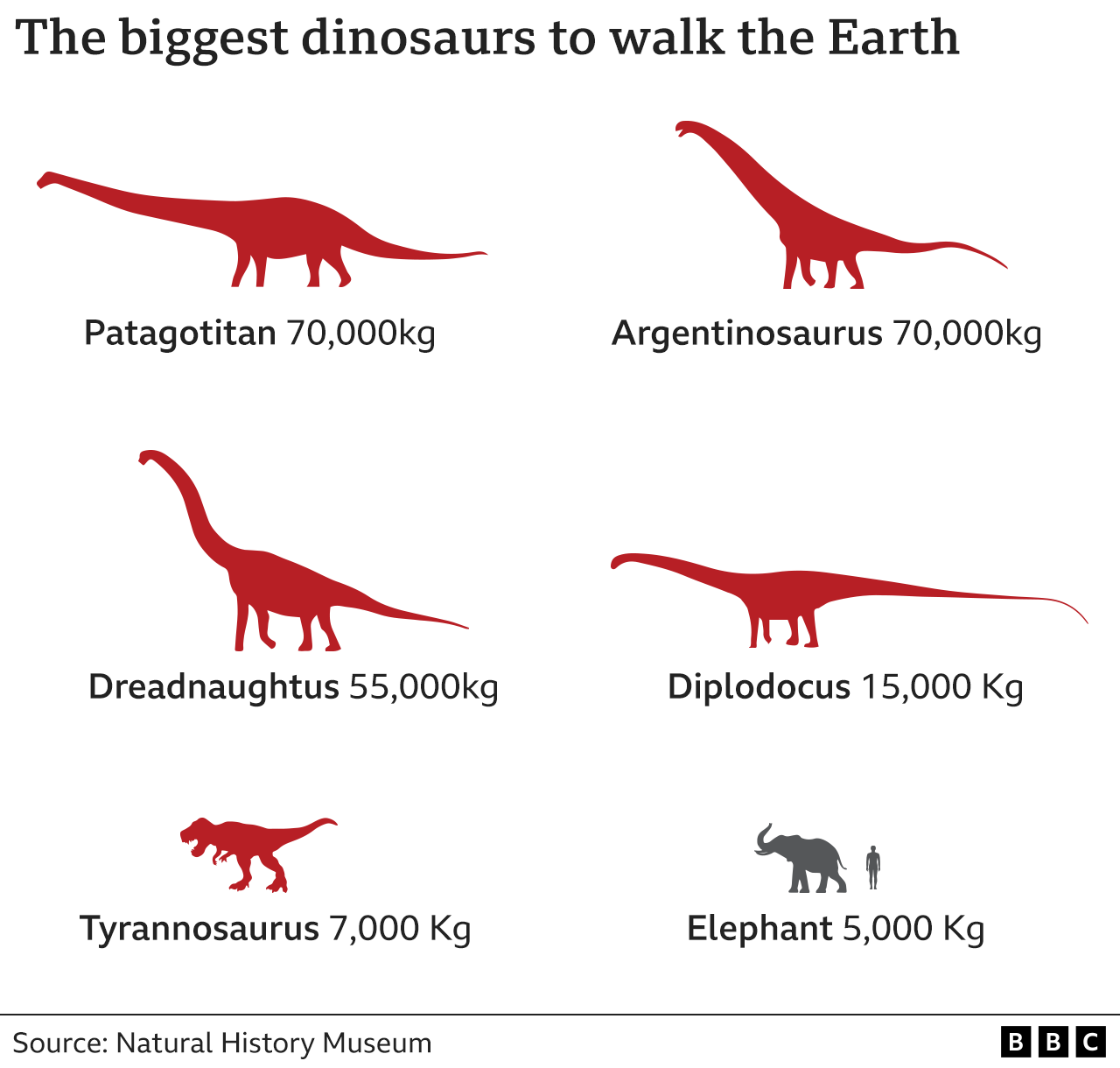
The cast is accompanied by lots of interactive videos and games that explain the life stories of the exceptionally large sauropods that lived in the Cretaceous Period of Earth history.
Who exactly was the biggest of these titanosaurs is difficult to say, but animals like Patagotitan and another creature called Argentinosaurus were right up there.
“What’s incredible about Patagotitan is the amount of the dinosaur that was found,” said exhibition developer Sinéad Marron.
“The other giant dinosaurs are known from just a few fragments of bones, whereas the skeleton of Patagotitan is known from a couple of hundred bones from at least six different individuals. We simply know more about Patagotitan than all the other giants.”
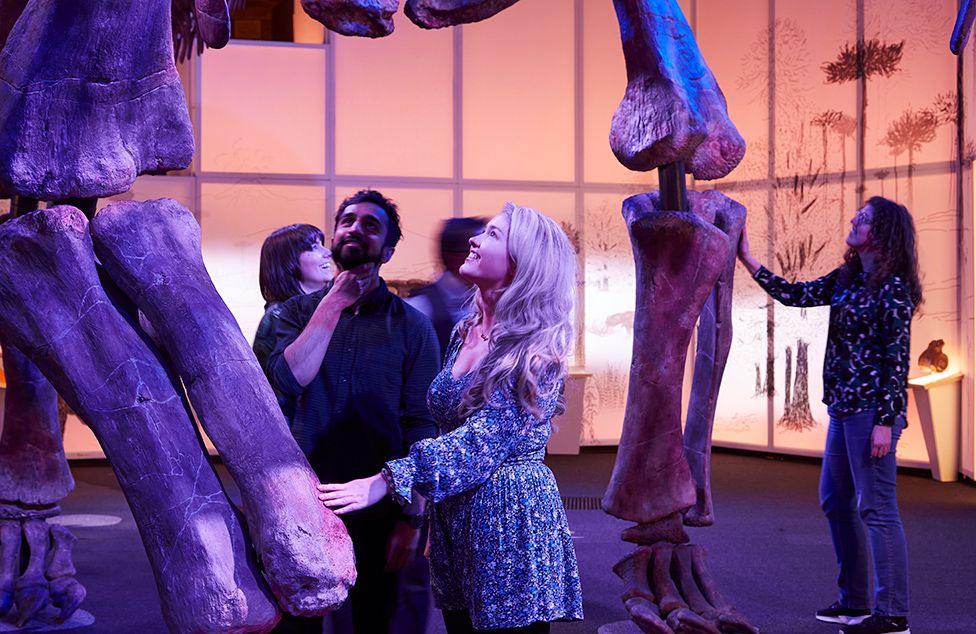
Scientists are unsure why the titanosaurs were so big, but they have a good idea as to how they developed their immense bulk.
This probably had something to do with the relatively poor quality plant food available to them, which required a large digestive system to get the most out of it.
Essentially, they were giant fermentation tanks on sturdy legs.
Visitors will get to squeeze some tubes intended to simulate a titanosaur’s intestines. Prepare to be shocked by the beast’s tummy rumbles.
An animal as big as Patagotitan would have had to eat all day and most of the night to sustain itself.
By one calculation, the animal could have consumed over 130kg of plants every day. This is equivalent to approximately 515 round lettuces.
No wonder scientists describe titanosaurs as “ecosystem engineers”. As they moved across the landscape, they would have cleared all vegetation in front of them.
Imagine the slurry production… from a whole herd.
It’s a yucky thought but with it would have come the mass processing and shifting of nutrients, along with the dispersal of countless seeds.
The influence on the environment and the lives of all animals around at the time would have been profound.
The exhibition – Titanosaur: Life as the Biggest Dinosaur – opens on Friday and runs until 7 January next year. It is a ticketed event.
